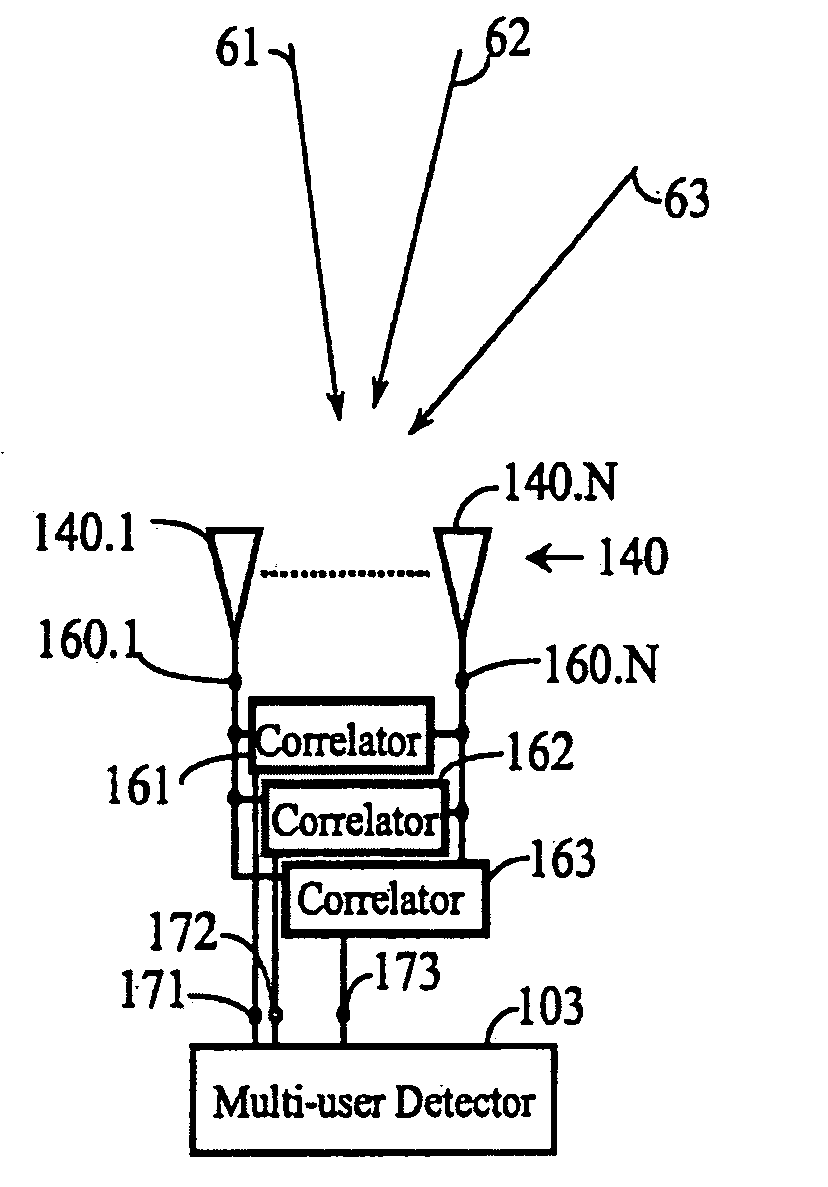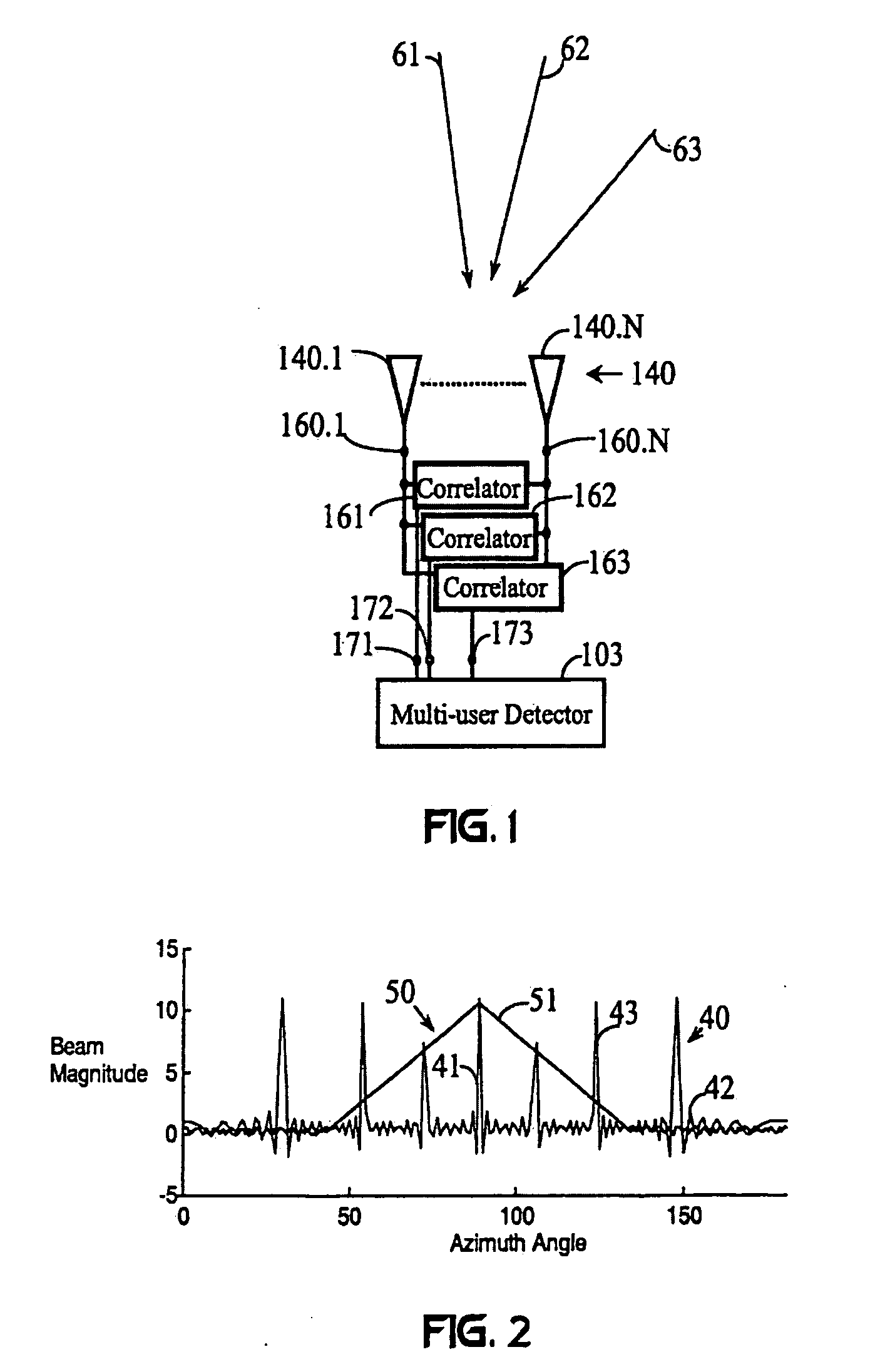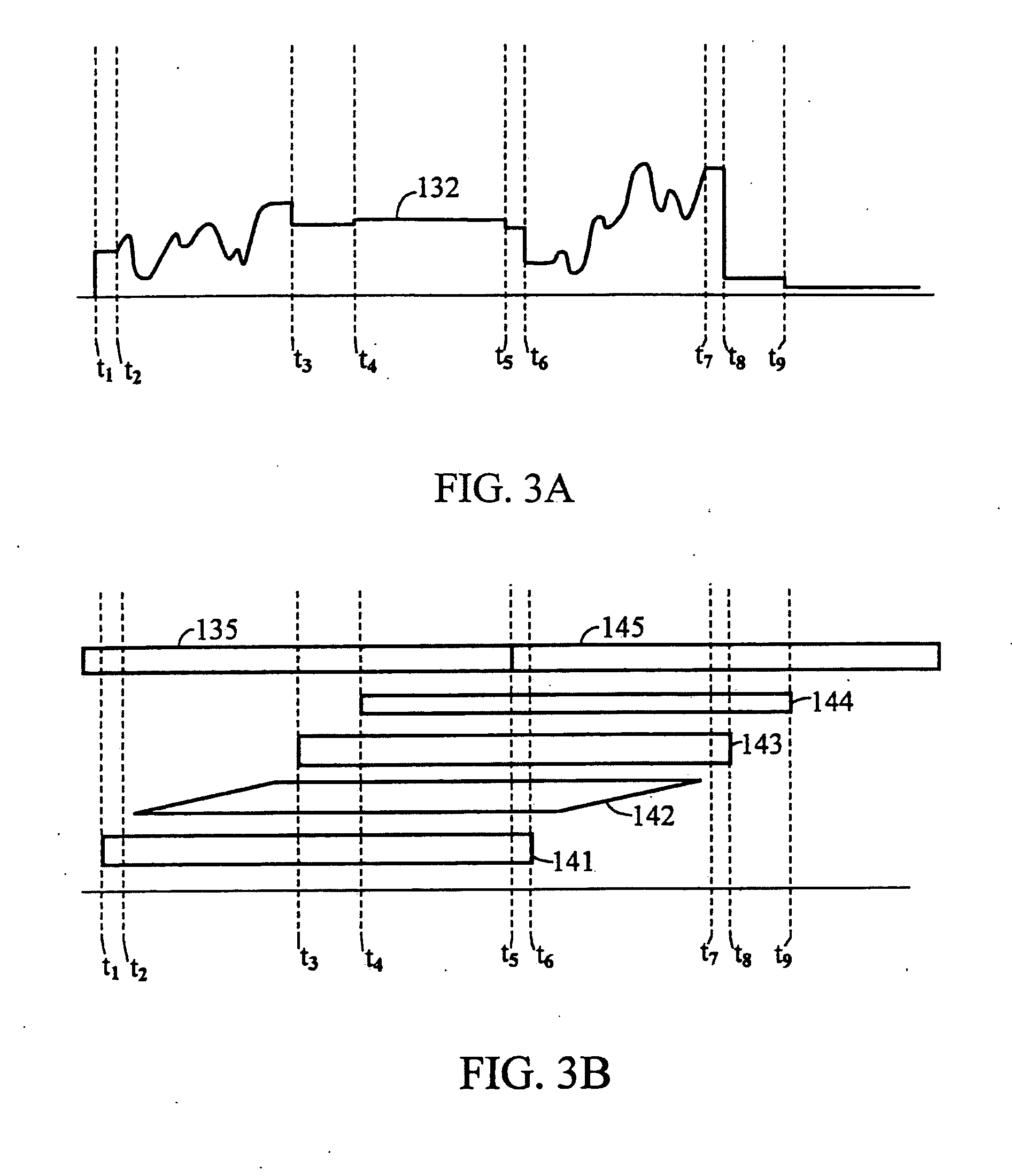Spread spectrum communication method and system using diversity correlation and multi-user detection
a technology of multi-user detection and communication method, applied in diversity/multi-antenna system, polarisation/directional diversity, amplitude demodulation, etc., can solve the problems of large scale, complex process, and large size of phase-based electronically controlled phased array system, so as to ensure the separability of interfering signals, optimize the correlation process, and optimize the effect of the correlation process
- Summary
- Abstract
- Description
- Claims
- Application Information
AI Technical Summary
Benefits of technology
Problems solved by technology
Method used
Image
Examples
Embodiment Construction
[0051]FIG. 1 shows a spread-spectrum receiver system of the present invention. An array 140 including at least two receivers 140.1 and 140.N receives a plurality of signals sn(t) from a plurality of directions of arrival, such as directions 61, 62, and 63, in a communication channel (not shown). Different directions (such as directions 61, 62, and 63) of arrival result in a plurality of different signal delays Δti occurring between signals received by the two receivers 140.1 and 140.N. Signal responses of the receivers 140.1 and 140.N are output at one or more receiver outputs, such as outputs 160.1 and 160.N. The receiver-output signals are coupled into a plurality of correlators 161, 162, and 163. The output of each correlator 161, 162, and 163 is coupled to a multi-user detector 103.
[0052]Three transmitted signals s1(t), s2(t), and s3(t) arrive at the array 140 from the directions 61, 62, and 63, respectively. This simple case is shown for the purpose of facilitating an understan...
PUM
 Login to View More
Login to View More Abstract
Description
Claims
Application Information
 Login to View More
Login to View More - R&D
- Intellectual Property
- Life Sciences
- Materials
- Tech Scout
- Unparalleled Data Quality
- Higher Quality Content
- 60% Fewer Hallucinations
Browse by: Latest US Patents, China's latest patents, Technical Efficacy Thesaurus, Application Domain, Technology Topic, Popular Technical Reports.
© 2025 PatSnap. All rights reserved.Legal|Privacy policy|Modern Slavery Act Transparency Statement|Sitemap|About US| Contact US: help@patsnap.com



